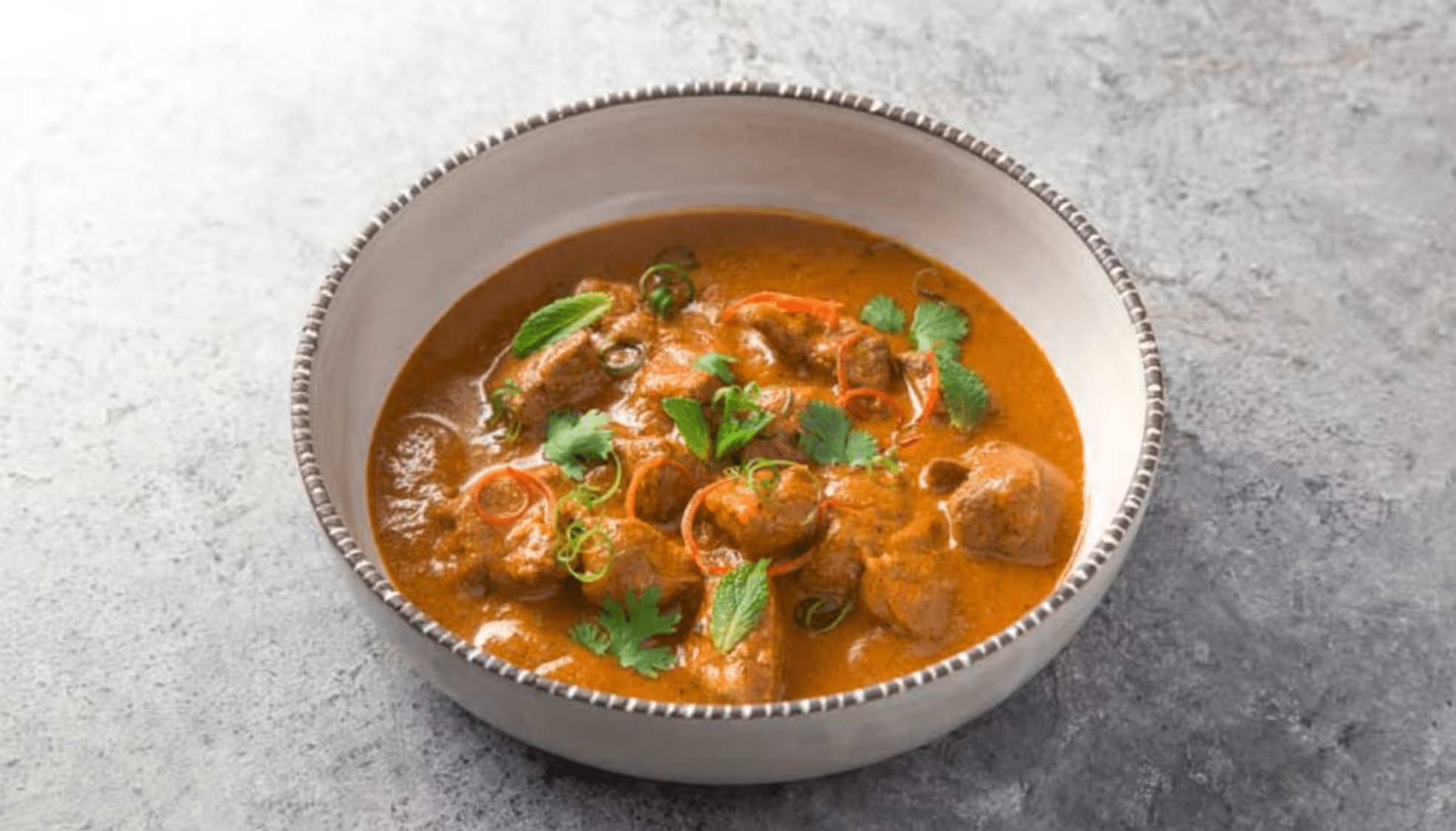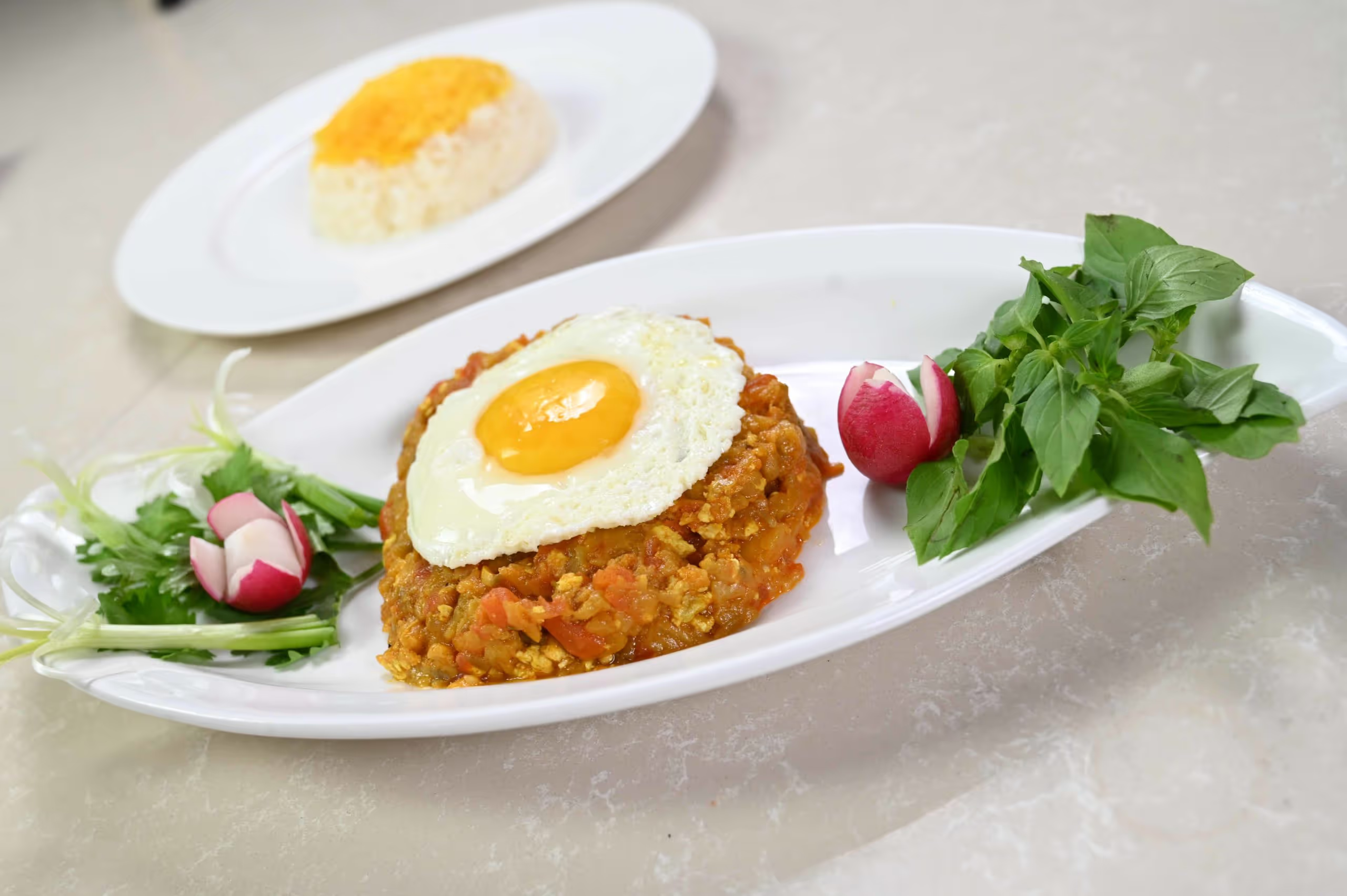Succulent pieces of lamb cooked in an intense flavorful gravy made of Kashmiri chillies and aromatic spices and left to simmer until a curry is formed and the meat is absolutely tender.
Lamb is a young one of a sheep that is under one year old and known for its delicate and flavorful tender flesh.
The word lamb comes from the German word “lambiz”. Historically, it is believed that sheep were discovered somewhere in Central Asia, and used not only as a good source of food but their skin & wool for clothing. Sheep have since long been a dietary staple as well as a textile source in Asia, Europe, Australia and New Zealand.
It is called a “Young Lamb” when slaughtered between 6 to 8 weeks; it has the palest meat of all. “Sprig” (which is also known as early or summer lamb) is lamb slaughtered between 3-5 months old. Lambs slaughtered between 1 to 2 years old are called “hoggart” and have a much stronger flavor and slightly less tender flesh. Anything above 2 years is called “Mutton”; although they are more flavorful, the meat is tougher and needs a slow cooking method to tenderize and cook well.
English cuts of Lamb have evolved through the centuries and reflect the change in cooking methods and taste in English homes.
To learn more about the popular cuts of Lamb, you can go through the introductory lesson - Meat: Lamb… Make the Most of Your Meat!
Lamb Recipe of the Day - The Rogan Josh

About Lamb Rogan Josh
Rogan Josh is an aromatic lamb dish of Persian origin and is one of the best known Indian lamb classical dishes. Rogan Josh literally means cooked in “oil” with intense “heat” (spice), as Rogan means “oil” in Persian while Josh means “passion, heat”. Rogan Josh consists of chunks of lamb stewed to make them meltingly tender and then traditionally cooked with a gravy of browned onions, ginger, garlic, yogurt combined with several spices such as cinnamon, cardamom, cloves, bay leaves and dried Kashmiri chilies that gives the dish its unique and characteristic red color.
Apart from the color, the Kashmiri chili comes together with the other spices & yoghurt to create a soothing yet flavorsome sauce. Although not traditional, many modern interpretations of this dish include the use of tomatoes and onions in the recipe to enrich the flavor and deepen the color.
This fiery lamb or mutton dish from the Kashmir region of India is a world popular dish and is best served with Indian bread.
This Dish
Succulent pieces of lamb cooked in an intense flavorful gravy made of Kashmiri chilies and aromatic spices and left to simmer until a curry is formed and the meat is absolutely tender.
Recipe Card (to serve 4 pax)
Method of Cooking
1. In a food processor, blend together - onions, garlic, ginger, and the tomato purée.
2. In a medium saucepan, heat ghee & oil and add cardamom pods, bay leaf, and cinnamon stick. To this add lamb pieces and sear until the lamb is well browned all over.
3. Stir the onion paste into the browned lamb, cook until dry and browned. Note - the oil will start to ooze out of the mixture when it is browned.
4. Add the garam masala, Kashmiri chili, cinnamon, cumin, coriander, salt, and yoghurt, and cook for a minute.
5. Add water and simmer for 1 and a half hours until the meat is soft and tender, keep covered for aromas to hold (stir occasionally).
6. Serve hot.







.avif)


.avif)
.avif)